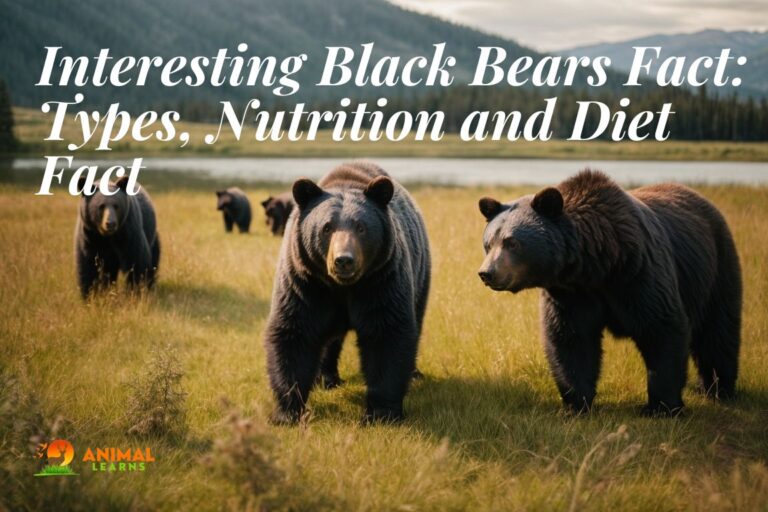Top 10 Largest Animals In The World

Blue whales and African elephants are among the largest animals in the world, commanding attention with their immense size.
The Earth is home to an incredible array of wildlife, and among them are the largest land animals that command attention with their size and presence. The African bush elephant claims the title of the largest land animal, a gentle giant that roams the savannas and forests of Africa.
Weighing several tons and towering over other species, the African bush elephant epitomizes the grandeur of the animal kingdom. It holds a significant place not only as the largest land mammals but also as a symbol of strength and intelligence.
Alongside the African bush elephant, there are various contenders for the title of the top 10 largest land animals, each contributing to the rich biodiversity of our planet. These magnificent creatures, from the towering giraffes to the powerful rhinoceroses, showcase the remarkable diversity of life on land.
Meanwhile, the world beneath the waves is home to the largest sea animals, from graceful whales to majestic sharks.
Largest Animals List
Contents
- Blue Whale
- African Elephant
- Giraffe
- Dinosaur
- Ostrich
- Polar Bear
- Crocodile
- Green Anaconda
- White Rhinoceros
- Hippopotamus
Blue Whale
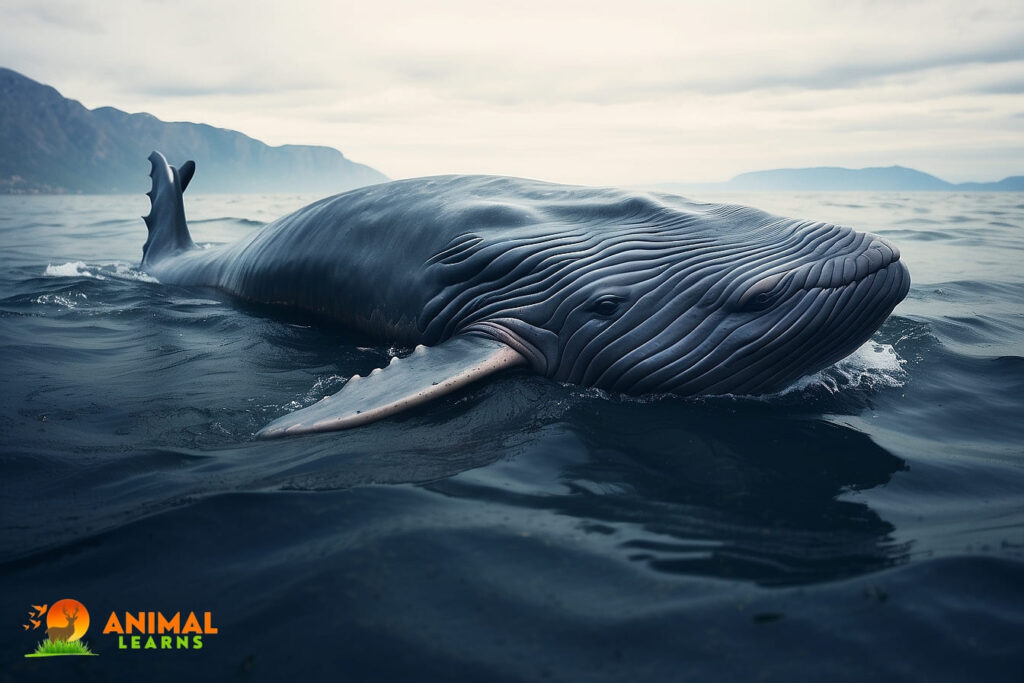
| Attribute | Information |
| Scientific Name | Balaenoptera musculus |
| Length | Up to 100 feet (30 meters) |
| Weight | Up to 200 tons (181 metric tonnes) |
| Height | Around 30 feet (9 meters) |
| Group | Cetacea |
| Type | Baleen Whale |
| Diet | Primarily Krill |
| Swimming Speed | 5 mph (8 km/h) |
Today, the blue whale is the largest animal alive. The heaviest one weighed 190 tons and measured 27.6 meters in length. It is thought that one of these longer blue whales could weigh approximately 250 tons.
Longer blue whales, up to 33.6 meters, have been observed, but their weight was not measured. Among animals not in groups, the lion’s mane jellyfish reaches 36.6 meters in length.
In 2023, scientists said an extinct whale called Perucetus, found in Peru, may have weighed between 85-340 tons, heavier than a blue whale. In addition, there was a dinosaur called Bruhathkayosaurus, which some thought could weigh 110-170 tons, and even as much as 240 tons if it were like another dinosaur known as Patagotitan. Unfortunately, the actual dinosaur bones no longer exist, so we aren’t sure about these weights.
African Elephant
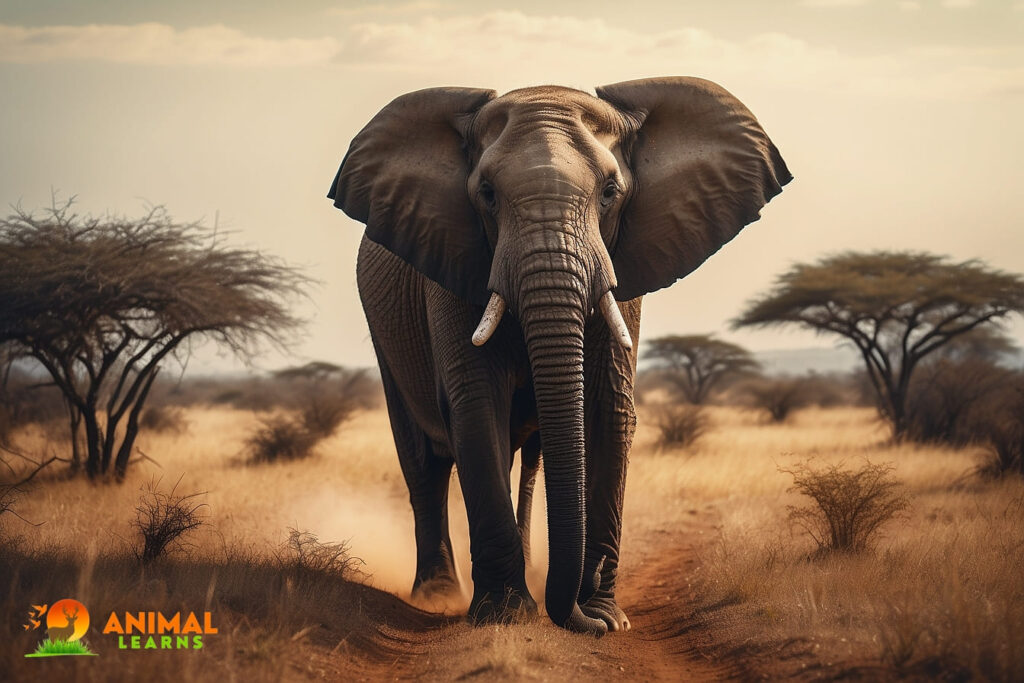
| Category | African Bush Elephant | African Forest Elephant |
| Scientific Name | Loxodonta africana | Loxodonta cyclotis |
| Weight | 5,000 – 14,000 kg (11,000 – 31,000 lbs) | 2,000 – 6,000 kg (4,400 – 13,000 lbs) |
| Length | Up to 10.7 m (35 ft) | Up to 8.2 m (27 ft) |
| Height | Up to 3.96 m (13 ft) at the shoulder | Up to 2.7 m (9 ft) at the shoulder |
| Diet | Herbivore, primarily grasses, leaves, bark | Herbivore, feeds on various plant materials |
| Location | Various habitats across Africa, including savannas, forests, and grasslands | Central and West African rainforests, as well as some savannas and woodlands |
African elephants belong to a group called Loxodonta, and there are two types: the big African bush elephant and the smaller African forest elephant. They are also included in the list of the largest animals. They are friendly plant-eaters with grey skin, but they differ in tusk size and color, ear shape, and skull size.
IUCN Red List indicates that both types of elephants are in danger of disappearing. The bush elephant is endangered and the forest elephant is critically endangered as of 2021. Their homes are lost, their groups are divided, and they are hunted for ivory tusks, which are illegal and harmful.
A Loxodonta elephant is one of the two species within the Elephantidae family. Loxodonta elephants are known for their diamond-shaped enamel on their back teeth.
Giraffe
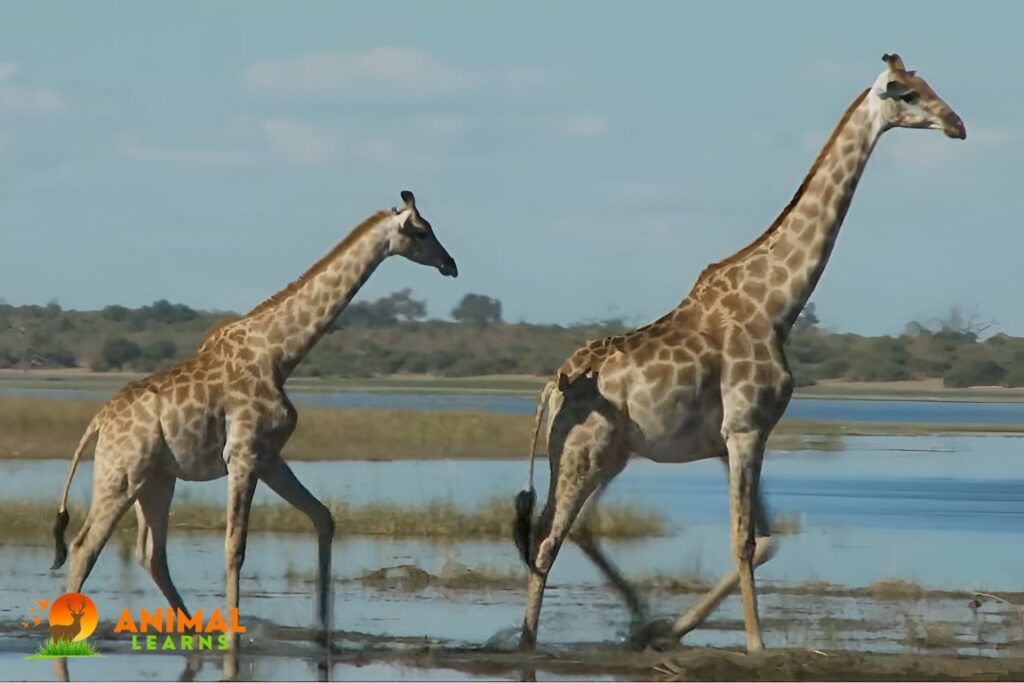
| Attribute | Giraffe |
| Scientific Name | Giraffa camelopardalis |
| Height | 16-18 feet |
| Weight | 1,600-3,000 lbs |
| Color | Spotted coat |
| Diet | Herbivorous |
| Running Speed | 35 mph (56 km/h) |
The Giraffe is an icon of Africa’s savannas due to its elegant stature and distinctive long neck. Its elongated neck, which consists of seven vertebrae like our own, allows it to graze at lofty heights of up to 18 feet, enabling it to grow at towering heights of up to 18 feet.
In addition to serving as a unique identifier, its irregular patching in its coat also serves as a thermal regulator in the sun-drenched landscape it inhabits.
Dinosaur
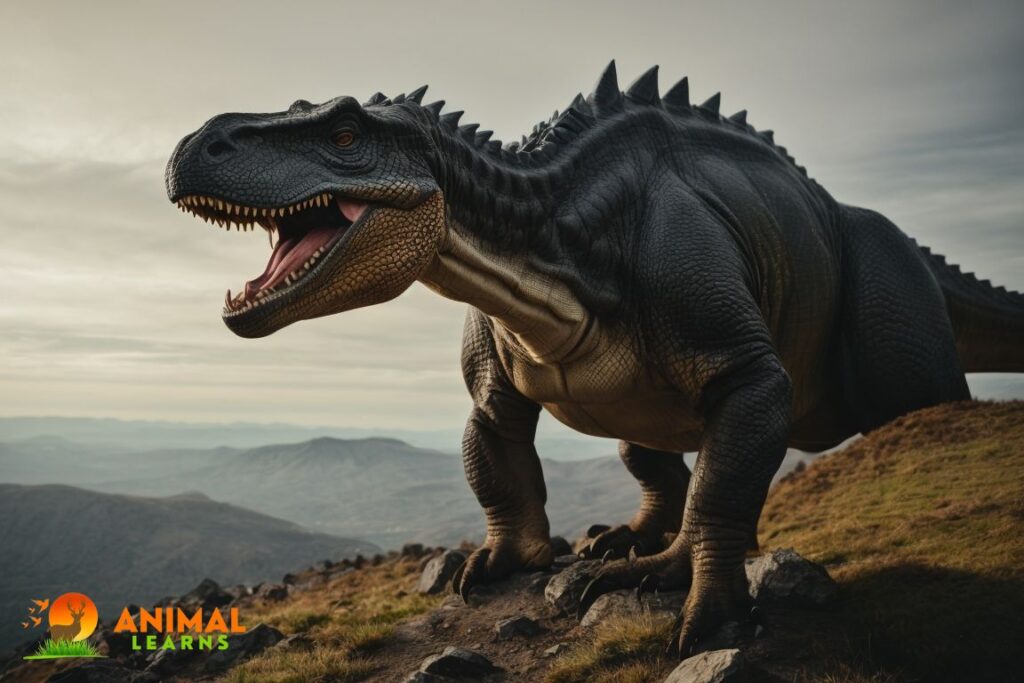
| Attribute | Sauropod Dinosaurs |
| Scientific Name | Various species |
| Length | >100 feet |
| Weight | >100 tons |
| Color | Various |
| Diet | Herbivorous |
| Running Speed | N/A |
Taking us back to a time when colossal reptiles roamed the Earth, the Dinosaur captures our imagination. Among the many species, the largest was the Argentinosaurus, a colossal herbivore that roamed throughout the world.
Sauropodas were plant-eaters with long necks that were the biggest dinosaurs ever. The tallest known sauropod was a Giraffatitan found in Tanzania, measuring 12-14 meters tall and weighing 23.3-39.5 tons.
The longest is the Diplodocus from Wyoming, 25 meters long. In Argentina, a Patagotitan weighing 69–77 tonnes is estimated to be 37–40 meters long, and 20 meters tall. Other big sauropods, such as Argentinosaurus, may have weighed 100 tonnes.
Ostrich
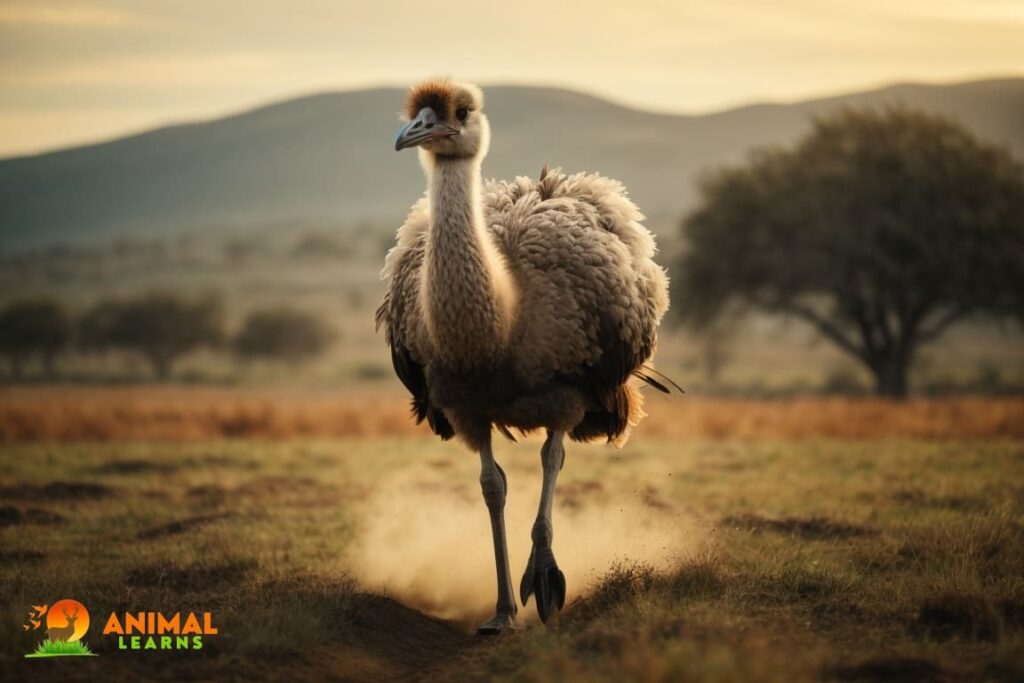
| Attribute | Ostrich |
| Scientific Name | Struthio camelus |
| Height | 7-9 feet |
| Weight | 220-290 lbs |
| Color | Black and white feathers |
| Diet | Herbivorous |
| Running Speed | 45 mph (72 km/h) |
Ostrichs are also included in the top 10 largest animals list. Our avian giant, the Ostrich, is an extraordinary example of adaptation. This flightless, yet remarkably swift, inhabitant of the African plains clocks in as the tallest and heaviest bird alive with heights up to 9 feet. It is capable of propelling itself at speeds of 45 miles per hour thanks to its powerful legs.
Polar Bear

| Attribute | Polar Bear |
| Scientific Name | Ursus maritimus |
| Height | ~10 feet |
| Weight | 900-1,600 lbs |
| Color | White fur |
| Diet | Carnivorous (seals) |
| Running Speed | 20 mph (32 km/h) |
A Polar Bear commands our attention as we turn toward the frigid Arctic expanse. With a weight of 1,500 pounds and a height of around 10 feet when standing upright, this carnivorous marvel has developed specialized adaptations to survive in the harsh polar environment.
The polar bear is able to swim and traverse the icy terrain in pursuit of prey thanks to its thick fur, layers of blubber, and powerful limbs.
Crocodile

| Attribute | Nile Crocodile |
| Scientific Name | Crocodylus niloticus |
| Length | 16-20 feet |
| Weight | 500-1,200 lbs |
| Color | Dark greenish-brown |
| Diet | Carnivorous |
| Running Speed | 10-12 mph (16-19 km/h) |
The Crocodile emerges as a formidable aquatic giant when submerged in water, especially the Saltwater Crocodile. With a length exceeding 20 feet, this stealthy predator epitomizes the height of reptilian power.
As a result of its well-armored body, powerful jaws, and keen senses, it is an efficient and fearsome inhabitant of Indo-Pacific coastal waters.
Green Anaconda

| Attribute | Green Anaconda |
| Scientific Name | Eunectes murinus |
| Length | Up to 30 feet |
| Weight | >500 lbs |
| Color | Greenish-brown |
| Diet | Carnivorous |
| Running Speed | N/A |
Continuing our narrative, the Green Anaconda weaves itself into the lush ecosystem of the Amazon. In addition to being the world’s heaviest snake, this serpentine giant is also an expert ambush predator with an imposing length of up to 30 feet.
Within their intricate ecosystems, these reptilian marvels exhibit extraordinary adaptability, exemplified by their ability to constrict large prey.
White Rhinoceros
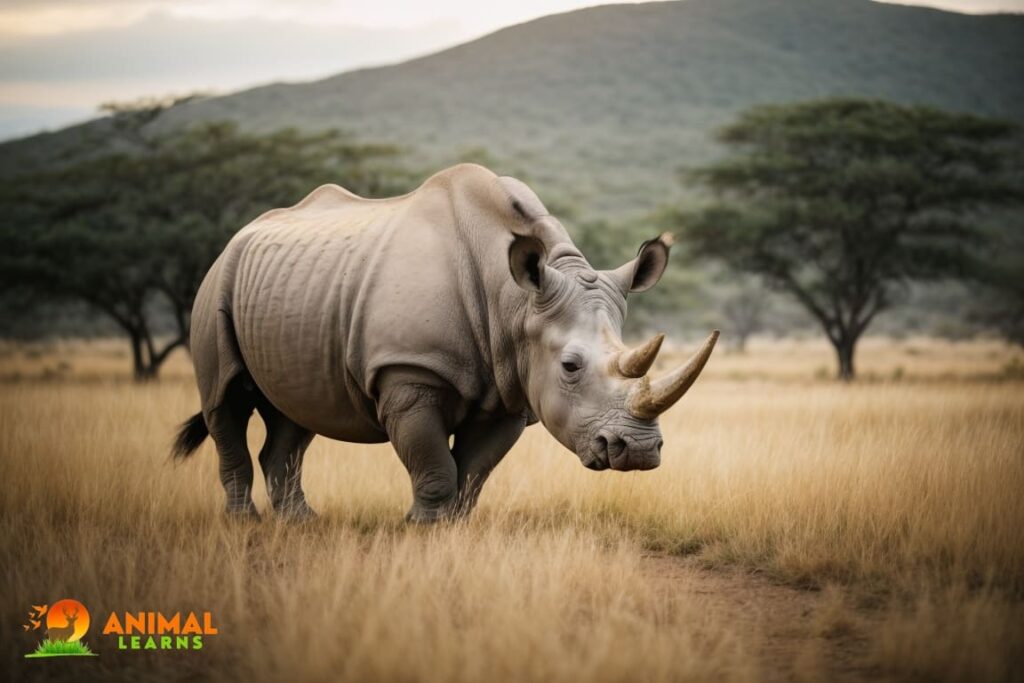
| Attribute | White Rhinoceros |
| Scientific Name | Ceratotherium simum |
| Height | ~6 feet |
| Weight | 4,000-6,000 lbs |
| Color | Grayish |
| Diet | Herbivorous |
| Running Speed | 30 mph (48 km/h) |
The White Rhinoceros, an herbivorous leviathan native to African grasslands, continues our exploration. Its wide mouth, adapted for grazing on grasses, distinguishes this rhinoceros species from other rhinoceros species, which weighs up to 2,300 pounds and stands around 6 feet at the shoulder.
Though the White Rhinoceros is huge, it remains vulnerable to threats such as habitat loss and poaching despite its imposing size.
Hippopotamus

| Attribute | Hippopotamus |
| Scientific Name | Hippopotamus amphibius |
| Height | 4.5-5 feet |
| Weight | 3,500-9,000 lbs |
| Color | Grayish-brown |
| Diet | Herbivorous |
| Running Speed | 19 mph (30 km/h) |
Whenever the Hippopotamus enters freshwater habitats, it emerges as an aquatic giant with power and grace. A semi-aquatic herbivore, the Hippopotamus weighs around 3,500 pounds and stands about 5 feet high at the shoulders.
It is remarkably agile on both land and water. Hippopotamuses, however docile they seem, are among the most dangerous animals in Africa, and are notorious for their aggressive behavior when protecting their young.
World’s Biggest Land Animals
As we delve into the annals of natural history, we encounter the colossal remnants of creatures that once roamed the Earth – the largest land mammals. These ancient giants, now confined to the pages of fossils and scientific discovery, were titans of their time.
From the towering sauropods that grazed the prehistoric landscapes to the massive mammoths that traversed the icy terrains, the past harbored a diverse range of colossal beings. The quest to understand these creatures extends beyond mere curiosity, offering insights into the evolution of life on Earth.
As we’ve explored all the top 10 biggest land animals, We have uncovered a world where size was a testament to survival, adaptation, and the ever-changing dynamics of our planet.
FAQs
What is considered the largest animal on Earth?
The blue whale holds the title of the largest animal on Earth.
Are the largest animals primarily found on land or in the sea?
The largest animals come in both terrestrial and marine forms, with examples like the African elephant on land and the blue whale in the sea.
Which biome is home to some of the largest land animals?
The savannas of Africa are known for hosting some of the world’s largest land animals, including elephants and giraffes.
What is the tallest land animal?
The giraffe takes the title of the tallest land animal, with its distinctive long neck.
Are the largest animals currently alive the same as those in prehistoric times?
While some of the largest animals, like the blue whale, are still present, many prehistoric giants, such as dinosaurs, are now extinct.











